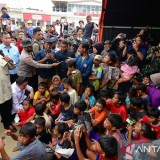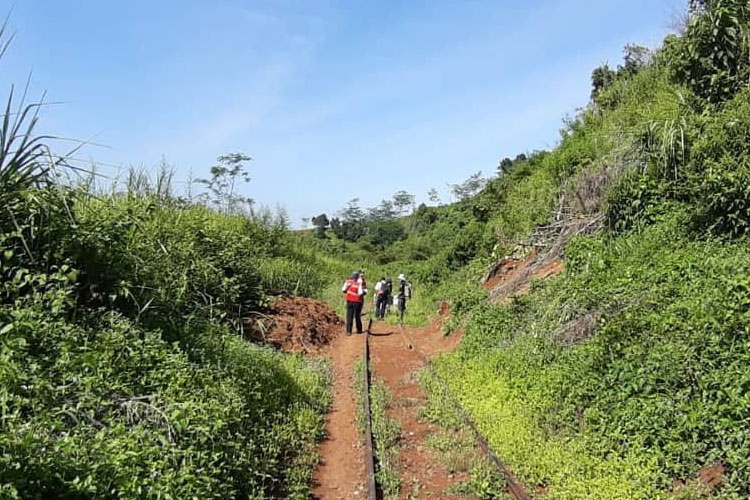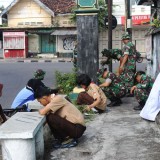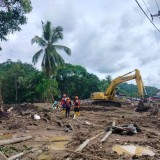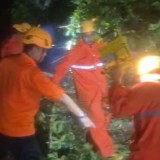TIMES AUSTRALIA, JAKARTA – With the densest population in Indonesia, Java Island has become the focus of fault mapping research. The National Research and Innovation Agency (BRIN) has conducted fault mapping across Java Island, stretching from Ujung Kulon to Banyuwangi, this related to the earthquake issues.
One of the goals of this research is to understand and map the potential earthquake risks in the region. The expedition project undertaken by BRIN not only maps faults but also includes mapping trenches, mountains, and underwater hills.
"Several areas along Java Island have been studied," said Sonny Aribowo, a Researcher at the Geological Disaster Research Center of BRIN, during the 'Java Island Fault Mapping and Geological Disaster Risk Mitigation' webinar on Wednesday (4/3/2024).
There are eight faults in Java that have been researched and published, namely Cimandiri Fault, Lembang Fault, Java Back-arc Thrust/Baribis-Kendeng, Opak Fault, Mataram Fault, Garsela Fault, Karangsambung Fault, and Pasuruan Fault.
"In addition, research has also been conducted on the Rembang-Madura-Kangean Sakala Fault line. It has been proven to be active based on morphological shifts and paleoseismological trenching," Sonny explained.
Several faults that have previously caused damaging earthquakes are still being studied by BRIN, such as the faults in Cianjur, Sumedang, and surrounding areas. The Java Back-arc Thrust Fault itself is still undergoing further research as it has the potential to affect urban areas like Semarang and Surabaya.
"Earthquakes often occur in understudied areas such as Cianjur, Sumedang, and even the latest one in the Java Sea near Bawean Island," he added.
"So far, BRIN plans to conduct terrestrial expeditions on Java Island to observe or confirm fault lines that have not been thoroughly explored. In the future, there will also be detailed maps of active faults on Java Island," he said.
Furthermore, Sonny continued, collaboration with several relevant agencies such as the Ministry of Public Works and Housing through the National Earthquake Study Center and BMKG will increase opportunities to identify/confirm active fault lines on Java Island.
"In addition, there is hope for knowledge of the recurrence interval from the seismic history of each active fault," he added.
Active Faults Beyond Lembang Fault
Lembang Fault is often regarded as an active fault in West Java. However, not only Lembang Fault, BRIN's research results show that there are many large active faults surrounding Sumedang Regency, West Java, namely Baribis Segment of Tampomas Fault, Baribis Segment of Ciremai Fault, Lembang Fault, Cileunyi Tanjungsari Fault, and Garsela Fault.
Important cities such as Cirebon, Bandung, Jakarta, Karawang, and Indramayu are also affected by these faults, as they store energy in the form of earthquake swarms or foreshocks.
The earthquake that occurred in Sumedang last January is tangible evidence of the existence of these active faults. The range of earthquake magnitudes that could occur in the Sumedang area is estimated to be between 6.6 and 7.
"Therefore, it is essential to gather more knowledge and develop effective mitigation strategies to reduce the potential impact of earthquakes in the future," Sonny emphasized.
Disaster Mitigation
BRIN's steps in fault mapping and BMKG's efforts in disaster mitigation development are in response to the Sumedang earthquake. This is also in line with global efforts to increase awareness and mitigate natural disasters.
International organizations such as the United Nations Office for Disaster Risk Reduction (UNDRR) consistently encourage countries to enhance understanding of natural disaster potentials and develop effective mitigation strategies.
Given Java Island's susceptibility to earthquakes, Sonny hopes that communities can anticipate the impacts of disasters.
"Engineering buildings to withstand earthquakes may be effective if the buildings have not been constructed yet. Also, avoiding construction near fault lines," he urged.
"With the results of this research, it is hoped that further mitigation efforts can be undertaken to protect communities and the environment from potential earthquake disasters on Java Island. Additionally, this research aims to make a positive contribution to global efforts to reduce the risk of natural disasters," Sonny concluded. (*)
| Writer | : Imadudin Muhammad |
| Editor | : Khodijah Siti |







